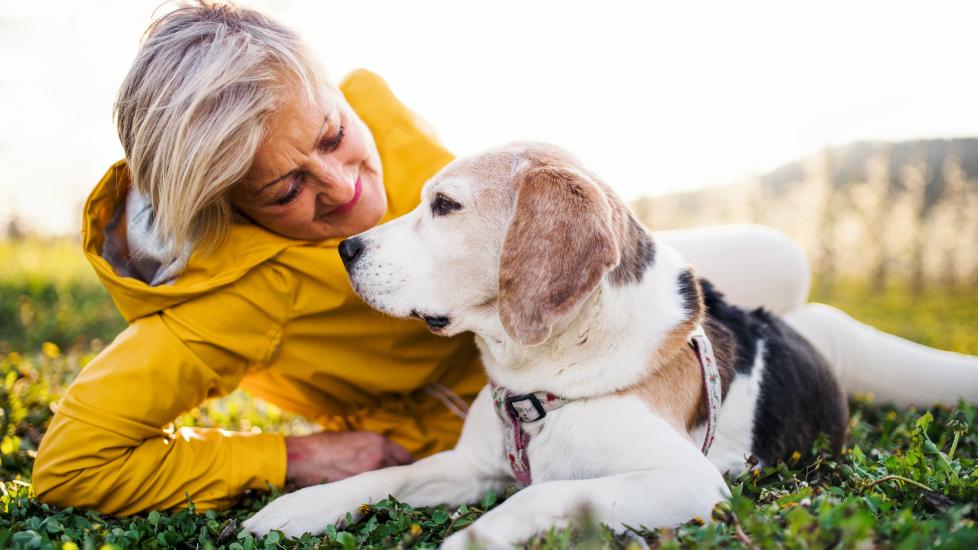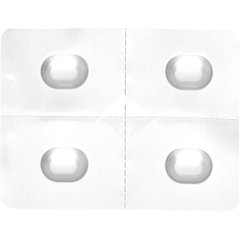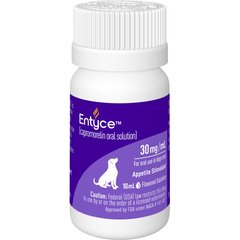Chemotherapy for Dogs
Halfpoint/iStock / Getty Images Plus via Getty Images
What Is Chemotherapy for Dogs?
Chemotherapy is the use of drugs to kill cancer cells or slow the spread and growth of a cancer. Chemotherapy drugs target rapidly multiplying cells, and cancer cells usually fall into this category. Unfortunately, so do some of the body’s normal cells, such as white blood cells and the cells that line a dog’s intestines.
Chemotherapy is a common treatment for many types of cancers. In some cases, such as canine lymphoma, it's the main treatment used to improve the quality and length of a dog’s life.
Types of Chemotherapy for Dogs
Chemotherapy drugs for dogs come in three main forms—oral medications, injections, and infusions. Examples include:
-
Oral medications—Toceranib, prednisone, cyclophosphamide, chlorambucil, and lomustine
-
Injections—Given into the tumor, into muscle, or under the skin: L-asparaginase
-
Intravenous (IV) infusions—Doxorubicin, carboplatin, epirubicin, mitoxantrone, vinblastine, and vincristine
The specific drugs used to treat a cancer in dogs depend on the type of cancer, the chemotherapy plan of your veterinarian, and your budget.
Why Would a Dog Need Chemotherapy?
A veterinarian often recommends chemotherapy for dogs if the dog has a tumor that cannot be surgically removed, a tumor with a high risk of spreading (metastasis), or a tumor that has already metastasized.
Examples of cancers that are commonly treated with chemotherapy as part of the treatment plan include lymphoma, high-grade mast cell tumors, and osteosarcoma.
Risks of Chemotherapy for Dogs
The most common side effect of chemotherapy for dogs is gastrointestinal upset causing poor appetite, vomiting, and diarrhea. This usually happens within three days of treatment and lasts three to five days.
Other side effects include:
-
Suppression of the bone marrow, causing low white blood cell counts in dogs
-
Susceptibility to infections like pneumonia
-
Hair loss (rare)
Some chemotherapy drugs have unique side effects.
For example, the drug doxorubicin is toxic to the heart over time. Occasionally, chemotherapeutics can have lifelong effects, such as damage to the kidneys caused by cisplatin.
Most chemotherapy treatments are well tolerated by pets. There is a less than 5% risk of severe complications.
If the planned treatments don’t work for your dog, your veterinarian may discuss alternative things to try. In some cases, you may have to discuss how to keep a good quality of life for your dog without chemotherapy.
Benefits of Chemotherapy for Dogs
The goal of chemotherapy for dogs is to give your pet a good quality of life for as long as possible.
Although negative side effects are common in humans having chemotherapy treatments, veterinarians make every attempt to eliminate negative side effects in animals, who don’t understand why they’re not feeling well and cannot consent to having those side effects. You can rest easy knowing that if your dog experiences side effects, your veterinarian will treat those side effects and likely alter their plan to ensure your dog continues to feel well throughout treatment.
How long a dog lives with or without chemotherapy varies a lot by the type of cancer, how aggressive the cancer is, how early it was diagnosed, and what treatment plan is used.
For example, this study found that a dog with lymphoma who undergoes the standard chemotherapy plan may have their life extended for about a year, sometimes longer. Dogs who don’t get treatment usually only survive one to three months.
Hemangiosarcoma, on the other hand, has an average survival time of one to three months with surgery alone, which is increased to around half a year in dogs who receive chemotherapy, according to this study.
Effectiveness of Chemotherapy for Dogs
Although some cancers can be put into remission with chemotherapy, most dog cancers are not cured by chemotherapy. Instead, veterinarians usually judge the success of a chemotherapy regimen by whether a remission is achieved, if it slows progression of cancer, how long the pet survives, and the pet’s quality of life during treatment.
Cost of Chemotherapy for Dogs
Chemotherapy for dogs ranges from about $150 to $600 per dose, with the total treatment easily costing more than $10,000.
When you factor in consultations with oncologists and testing to ensure your dog is doing well throughout treatment, it’s not uncommon to add another $1,000 to $2,000 to the total cost.
Pet insurance will often reimburse part of the cost of chemotherapy for dogs if the condition is not considered pre-existing and if you have a plan that covers illness. Make sure to check your dog’s plan to see if cancer treatment is covered and if that includes chemotherapy.
Chemotherapy is expensive, so it’s important to be gentle with yourself if you’re not able to afford this treatment for your pet. Discuss alternative methods of ensuring your pet has a good quality of life, such as pain control, with your veterinarian.
Your veterinarian may also discuss different treatment plans with you, which work better for your budget. Consider looking into fundraisers or organizations that could help you raise money for your pet.
Preparation for Chemotherapy for Dogs
Infusions and injections are usually given at the veterinary hospital, while some oral chemotherapy agents are given by the pet parent at home. Your veterinarian will give you instructions as to whether your pet should eat on the day of their chemotherapy.
If your pup is having an injection or infusion, the area will be shaved and cleaned before the needle is placed. Before chemotherapy, your veterinarian will commonly check on your pet’s bloodwork to ensure your pet is ready to receive treatment.
Whether you can stay with your pet or not depends on the individual hospital. Regardless, your dog will receive plenty of love from the veterinary staff.
Care and Recovery for Chemotherapy for Dogs
Chemotherapy for dogs is usually given over several weeks or months in several treatment sessions. If your dog is going to get nauseated, you can usually expect this within three days of treatment. Low white blood cell counts leading to infections like pneumonia usually occur one to three weeks after treatment.
Your pet may be prescribed anti-nausea medications like maropitant (Cerenia®) or antibiotics. In some cases, appetite stimulants like mirtazapine or capromorelin will be recommended.
Some chemotherapy drugs are toxic, so your veterinarian will have instructions for how to handle things like urine or feces. Consider having latex, nitrile, or similar disposable gloves to handle your dog’s eliminations or any accidents.
Contact your veterinarian if any negative side effects are seen.
Alternatives to Chemotherapy for Dogs
Chemotherapy for dogs is usually part of a multimodal treatment plan for cancer. Your pet may also have surgery or radiation therapy recommended as part of their plan.
In the absence of chemotherapy, veterinarians usually recommend management of your pet’s symptoms, such as pain, appetite loss, or anxiety. You may be interested in learning about holistic cancer treatments for dogs, supplements, or traditional Chinese medicine for your dog.
Please note that most holistic cancer treatments lack scientific evidence showing that they work.
Chemotherapy for Dogs FAQs
Is it worth giving chemotherapy to your dog?
Whether chemotherapy for dogs is worth it is a very individual choice. Your veterinarian can work with you to figure out if your pet would benefit and how long that benefit may last. Keep in mind that your vet will do the best they can to eliminate any negative side effects, and your pet’s quality of life will be the veterinarian’s top priority.
How painful is chemo for dogs?
Chemotherapy is generally not very painful for dogs, though some dogs react to needle pokes. Dogs who have gastrointestinal upset may have stomach or intestinal pain. Injectable treatments may sometimes cause local pain at the injection site.
Should I give my dog chemo for lymphoma?
Chemotherapy is the primary treatment for lymphoma and is the best method for extending your pet’s life. Speak with your veterinarian about whether it’s a good option for your pet.



